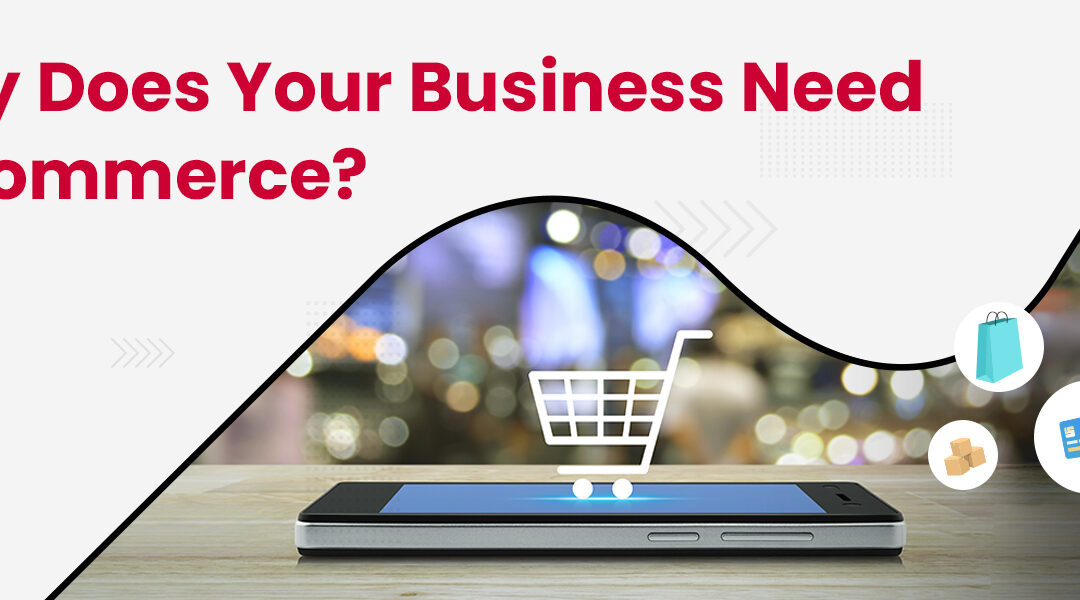The world seems to be digital, and we’re not just discussing the internet. We’re talking about smartphones, tablets, apps—you name it. And while eCommerce is still king when it comes to online shopping, mCommerce is growing more rapidly than ever before. Some experts are predicting that mCommerce will overtake retail sales within five years! The reason for this is simple: mobile devices are becoming more and more popular each day, with over 2 billion people owning at least one smartphone worldwide. This trend shows no signs of slowing down, and as a result, retailers have to rethink their strategies to meet these changing customer needs.
mCommerce is the next big thing in the eCommerce business. That means if you want your business to succeed in this new era of commerce where everyone is a potential customer (and vice versa), then mCommerce is something you should be taking a look at.
What is mCommerce?
Before learning the importance and other factors of mCommerce, let us first know what exactly mCommerce is. mCommerce is the abbreviation of mobile commerce which reflects the process of buying and selling goods and services using mobile devices, including smartphones or tablets, with the aid of an internet connection.
The world has changed. Today, customers are more connected than ever before. They expect to be able to discover, buy, and enjoy products at the click of a button. And they want to do it all in real-time—without having to leave their homes or offices!
That’s where mCommerce comes in. It’s a retail store in your customers’ pockets—an online storefront that allows them to browse products and place orders anytime they want it, wherever they are located at any given time!
mCommerce is a new way to buy and sell goods and services. It’s all about giving your customers the same ease of access that you’ve come to expect from traditional brick-and-mortar stores. Online shopping is a great way to make money, but it’s not the only way. If you want to maximize your sales and profits, you need to consider mCommerce as a medium for boosting your revenue.
Why is mCommerce Important?
Now that you have a basic understanding of mobile commerce let’s look at the most important and mission-critical benefits it brings to companies.
Wider Reach
Mobile commerce allows companies to enter new markets they could never reach. According to Statista, the number of mobile devices operating worldwide is expected to reach 18.22 billion by 2025. This trend is expected to grow even more as smartphones become more sophisticated and data plans become cheaper and more widely available.
And just like some people use the internet, some people use their mobile devices to access the internet: that’s why every mobile phone user is a potential customer. This large user base offers many opportunities for generating and nurturing sales leads. Getting to the offer is much easier for customers if all it takes is downloading your app from an app store. This means that you need to design your app and its features to guide people through downloading it, setting it up on their devices, and getting started. Of course, the easier this experience is for your users, the more likely they’ll engage with your app.
Fast Browsing And Transactions
Fast and convenient transactions are vital for your business to sell more and make more money. With mobile commerce, shopping apps have faster processing speed than traditional websites. Because of this, retailers can create a new experience for customers that is more interactive and easy to use. In addition, the speed of mobile commerce processing allows for a seamless shopping experience for users who want to shop from their smartphones or tablets.
New Marketing Opportunities
When you’re looking to reach new customers and expand your business, mCommerce is a great solution. By carefully monitoring and analyzing the traffic in your app, mCommerce offers inherent scalability to businesses.
Businesses that use mCommerce can monitor their traffic in real-time, which allows them to adjust their marketing activities based on consumer interest. For example, if you have a restaurant application that enables users to review their experience with the restaurant at the end of their meal, imagine if you could use that information to determine if it was time for a new marketing strategy. The ability to analyze trends to make more informed decisions is invaluable.
Personalized Content
Digital marketing has changed the way we purchase products. What was once a one-way process, where we would look for the best deals and buy what we liked, is now more of a two-way process.
Consumers are more aware of their choices in today’s market than ever before. They’re also more comfortable making decisions rather than being influenced by what others in their social circles are buying or recommending. This means more people want to feel like they’re getting value from their purchases by shopping online.
The most successful companies use mCommerce to reach out directly to consumers and offer them personalized content based on their preferences and wants. This helps them expand their reach and increase engagement with their brand, ultimately driving customer loyalty and improving the conversion rate.
If you want to increase your app’s revenue without spending more on advertising, consider offering personalized content based on the users’ behavior patterns and preferences. This will allow you to deliver the right message at the right time.
Mobile eCommerce apps allow companies to gather data about user location, interests, shopping history, and items viewed. When you combine this data with social media profiles, it becomes easier to figure out what products they’re interested in and how they like to shop. When you know those factors, it’s easy to deliver messages that resonate with them. For instance, you could offer special promotions or offers based on the user’s shopping history or even tailor ads for different demographics.
Direct Communication
As the world becomes more and more connected, the ability to communicate with customers is more important than ever.
From email newsletters and social media to in-store displays and mobile apps, there are many ways businesses can communicate with their audiences. However, to know what they need exactly, companies need to be able to contact them directly. This is where push notifications come into play – providing a quick way for businesses to reach their target market efficiently.
Push notification comes with higher open rates (even 90%). Therefore, it is a perfect channel to serve up precise information about products or services that may interest your customers. In addition, push notifications can also be used as an effective marketing tool by letting potential customers know about new products or promotions available only at certain times.
The ability to connect directly with customers in this way has been a major reason, so many companies are now choosing to create e-commerce applications.
Complementary To Brick-And-Mortar Stores
Mobile commerce is a big deal. Not only does it allow online stores to reach new customers, but it also benefits brick-and-mortar businesses because of the way people shop today.
Many shoppers are using mobile devices to browse products and compare prices across multiple stores—all while on the go. They can also use their phones for product customization, check stock availability at nearby stores, and even access item reviews.
Mobile commerce is a way to reach customers in unconventional ways. Retailers and brands often use it to drive sales in both online and brick-and-mortar stores by reaching a broader and more diverse set of customers.
Mobile Commerce Trends
Google has revealed some interesting statistics about mobile commerce.
- 51% of users prefer to use mobile apps for shopping or browsing.
- 63% of smartphone users are more likely to purchase a product through a mobile site or app that offers personalized recommendations.
- 58% of smartphone users feel more favorable toward companies whose mobile sites or apps remember their past behavior.
Mobile commerce is on the rise, and as the marketing landscape evolves, it is important to have relevant technologies in place to prepare for this growth.
Here are seven m-commerce trends that will dominate in the coming future:
- Mobile apps and progressive web apps (PWAs)
- One-click ordering
- Social commerce
- Voice commerce
- Mobile chatbots
- VR & AR
- Mobile Payments
Wrapping Up
Overall, mobile commerce is here to stay, and it’s going to be one of the hottest areas for growth in the immediate future. A mCommerce app can help extend your reach, improve customer loyalty, and increase sales. And while a large number of businesses have yet to embrace mobile commerce, the trend is evolving rapidly, especially because of the rise of in-app purchasing. mCommerce will soon evolve into an extensive form of mobile marketing, providing several different and valuable avenues for merchants to expand their brands. This means businesses need to adapt to the mCommerce way of doing business and be aware that mobile users are demanding increasing efficiency from their experiences across all touch points.
If you run a business and are still determining if mCommerce will benefit your business, taking the plunge now can put you ahead of the curve. You don’t want to miss out on what could be a lucrative opportunity.




